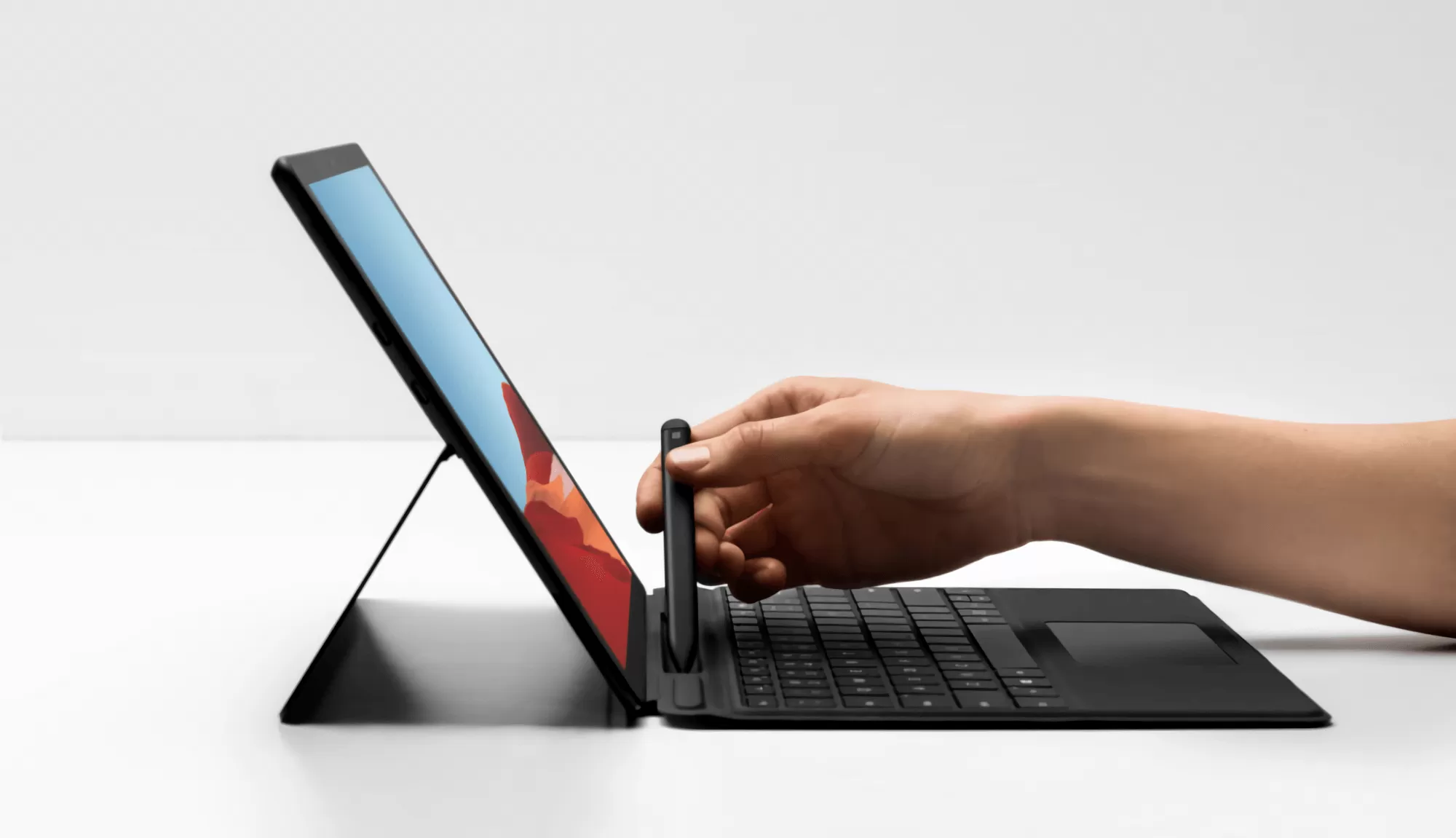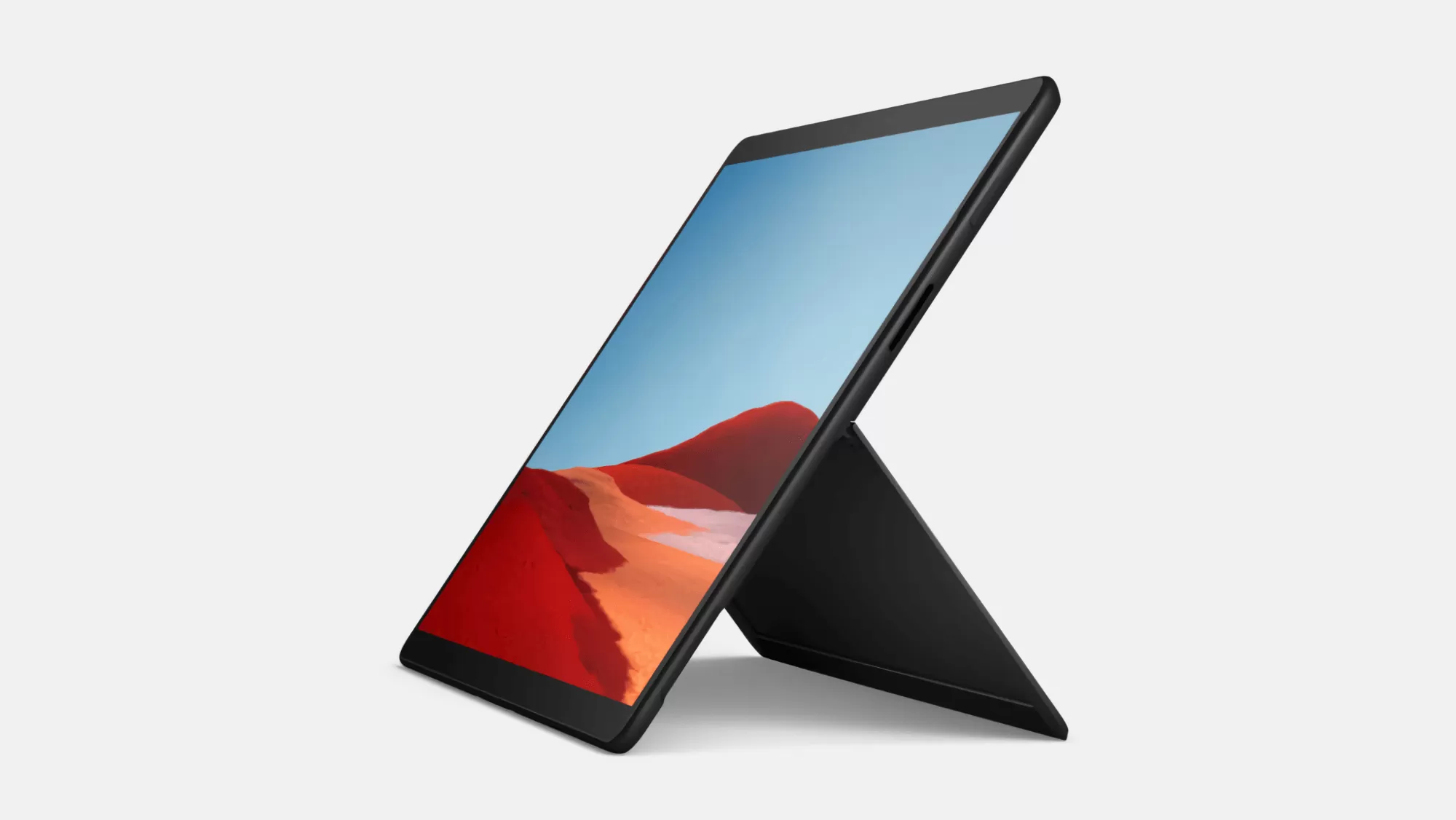Rumor mill: The Surface Pro X hasn't seen any substantial SoC upgrades since its initial release in 2019, bar a minor clock speed bump with the SQ2 chip in 2020. However, it's now looking like Microsoft and AMD are working on something with RDNA graphics to power a next-generation Surface Pro X -- and maybe other devices, too.

If a thread on Korean tech forum Clien is to be believed, Microsoft and AMD are working together to design an upcoming laptop-class processor, following Samsung's Exynos 2200 in using mRDNA graphics paired with an Arm CPU.
While it's expected to only use Cortex X1 cores compared to the Exynos' X2s, it's also likely to be running them at significantly higher clock speeds if the 3+ GHz clocks of the SQ processors are anything to go by. That should be a sizable advantage over the Samsung chip, more than enough to negate the 16% difference in IPC that Arm claims between the two designs.
Plus, it should be able to tote more of those cores -- whereas the Exynos only has a single X2 as its "Super" core -- and sustain that performance far better with the thermal and power headroom of a laptop chassis.
AMD is collaborating with Microsoft to equip powerful ARM laptop processor in Surface.
— Tron ❂ (@FrontTron) October 1, 2021
Target perf: lower than GTX1050 class but much better than Qualcomm chip that uses the old arch. and in the overall lightweight ARM laptops.
GPU: 4WGP, 8CU
(1/2)
Sourcehttps://t.co/ktt0SfgWjV https://t.co/vqkzQEwEjx
On the GPU side of things, the processor will apparently use an mRDNA2 GPU like that of the Exynos design, with 8 CUs, a setup that puts it on the same footing as the Steam Deck. The forum posts clarify that performance is comparable to (but weaker than) than the GTX 1050. That's below where the Valve handheld is thought to be, the Deck is also using full RDNA 2 graphics being fed with high-speed LP-DDR5 RAM. In any case, the Microsoft-AMD chip should still firmly beat the graphics solutions in existing Qualcomm products.

An Exynos modem should bring 5G connectivity, but that seems to be the extent of Samsung's involvement with this project. It was apparently going to be produced on the Korean titan's 5nm process originally, but low yields forced a shift to TSMC's 5nm node instead; the resulting delay would be responsible for the lack of an updated Surface Pro X for 2021.
However, there's also a substantial difference in process technology between the two foundries, with previous Anandtech testing finding Samsung's 5LPE to only just match TSMC's previous node, moving it to the latter's N5 process should bring tangible efficiency benefits. Given the fiery competition in laptop processors right now, between AMD's Ryzen offerings, Apple's M1, and upcoming Intel Alder Lake heterogeneous parts, any further gains for a device still weighed down by the mess of Windows-on-Arm would be more than welcome.
https://www.techspot.com/news/91546-microsoft-amd-could-bring-radeon-graphics-next-surface.html